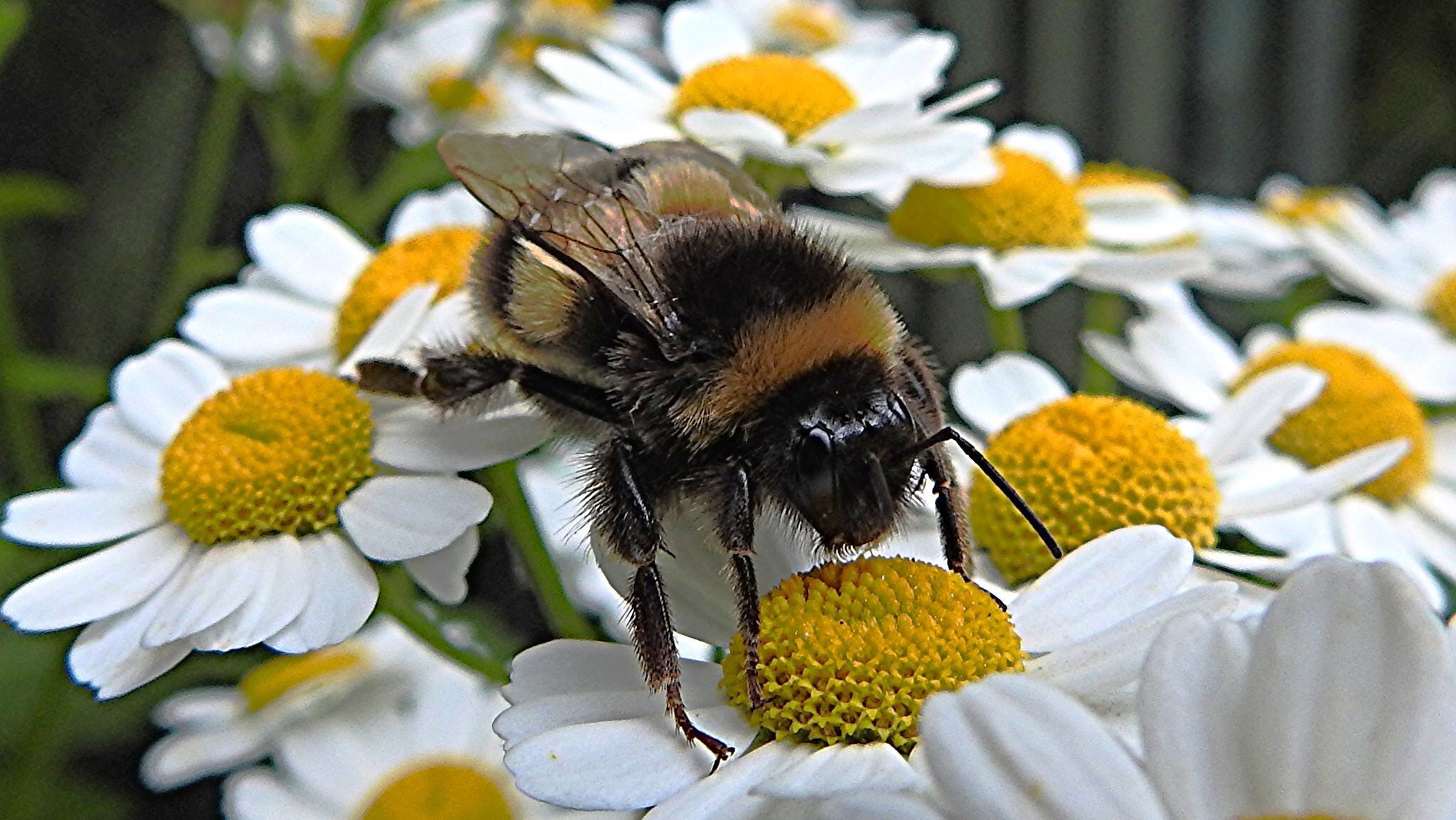
Due to loss of habitat, disease, pesticides, and climate change, the Rusty Patched Bumble Bee, Bombus affinis, has been classified as endangered under the Endangered Species Act. These insects are home in grasslands and prairies, but much of this land has been lost, degraded, or fragmented in recent years. Among these various threats, climate change is one of the biggest.
Rising temperatures have been found to be deadly to bumblebee populations. The Sierra Club says that on hot days, bees stop gathering pollen and expend their energy trying to fan their colony and keep it cool. CNN writes, “Declines in their populations are associated with increasing frequency of hotter temperatures and drying out of habitats, which raises bumblebees’ risk for extinction and diminishes their chances of colonizing a new area and creating more species.”
Habitat destruction is another factor contributing to the decreasing bumblebee population. The Center for Biological Diversity noted in February this year that, “In Illinois, where the [Rusty Patched Bumble Bee] once represented 1 in 4 bumblebee sightings, it has disappeared from the northern part of the state and, overall, is down an estimated 74% since 2004.”
Bumblebees are essential in our environment for their role as pollinators. Peter Soroye, co-author and PhD candidate at the University of Ottawa, writes, “Bumblebees are among the best pollinators we have in the wildlife system.” Some of the plants they pollinate include cucumbers, tomatoes, squash, and melon. “Plants and crops that rely on pollination from bumblebees are likely to suffer if bumblebee populations continue to decline or vanish altogether, which could result in incredible consequences for the ecosystem,” said Haley Todd, director of programs and education at Planet Bee, a San Francisco non-profit focused on bee conservation. There are consequences to declining bumblebee populations, including biodiversity loss and economic costs. National Geographic writes, “By one measure, bees contribute more than $15 billion to the U.S. economy by pollinating crops.”
Everyone can help support our bee populations by keeping their yards natural. The best way to do this is to use native plants in your landscaping and to always avoid the use of herbicides or pesticides.
There are several organizations that are fighting to save the lives of the bumblebees.
- Planet Bee Foundation: We are dedicated to creating a green-minded generation by spotlighting the struggling bee to foster environmental literacy and stewardship through the power of individual action. We work with schools, nonprofits, summer camps, environmental centers, community gardens and businesses to build long lasting care of the struggling honey bee and the environment by presenting hands-on, educational workshops on location.
- Defenders of Wildlife: Founded in 1947, Defenders of Wildlife is the premier U.S.-based national conservation organization dedicated to the protection and restoration of imperiled species and their habitats in North America. Defenders’ approach is direct and straightforward – We protect and restore imperiled species throughout North America by transforming policies and institutions and by promoting innovative solutions. We speak with one voice informed by scientific, legal and policy expertise, hands-on wildlife management experience and effective advocacy.
- Xerces Society: The Xerces Society has worked to gain Endangered Species Act protection for two of the most imperiled species in North America: the rusty patched bumble bee and Franklin’s bumble bee. In collaboration with several partners, we manage three community science projects: Bumble Bee Watch, which tracks and conserves bumble bees across the United States and Canada; the Pacific Northwest Bumble Bee Atlas, which collects data on species in Oregon, Washington, and Idaho; and, as of summer 2019, the Nebraska Bumble Bee Atlas. Over the past year, the Xerces Society has taught bumble bee identification and survey courses in California, Minnesota, Oregon, Massachusetts, and Washington
- Bumblebee Conservation Trust: We are working towards four main aims: 1) Enhance the understanding of bumblebee ecology and conservation. 2) Increase the quality and quantity of bumblebee habitat. 3) Inspire and enable a diverse range of people to take action for bumblebees. 4) Be an effective and sustainable organization.
To learn more about these fuzzy guys locally, check out these resources:
- Indiana Wildlife Federation Article on the rusty patched bumble bee
- Indiana State Department of Agriculture Tips
Sources:
- https://biologicaldiversity.org/w/news/press-releases/endangered-species-act-protection-sought-american-bumblebee-2021-02-01/
- https://www.fws.gov/midwest/endangered/insects/rpbb/factsheetrpbb.html
- https://seethewild.org/bumblebees-species-officially-endangered-in-usa/
- https://www.cnn.com/2020/02/06/us/bumble-bee-climate-change-extinction-study-scn/index.html
- https://www.sierraclub.org/sierra/are-bumblebees-going-extinct-climate-change
- https://www.nationalgeographic.com/animals/article/bumblebees-going-extinct-climate-change-pesticides


